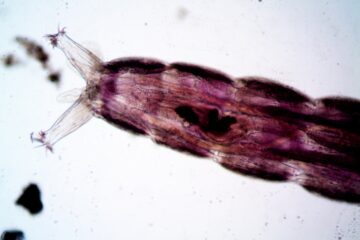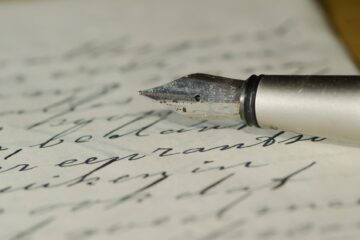![]()
Introduction:
The use of science and technology in crime prevention and prosecution and justice administration is not new to India. Although our ancestors did not know forensic science in its current nature, in the detection of crime, experimental approaches in one manner or another appear to have been followed. The detailed reference is present in the ‘Arthashastra’ by Kautilya, which was written around 2300 years ago. Millennia ago, Indians studied distinct forms of papillary lines. They are believed to be mindful of the persistence and individual nature of fingerprints. The Chinese records have shown that fingerprints were being used as signatures in ancient southern India. The use of fingerprints as signatures by uneducated individuals in India, adopted millennia ago, was considered only ritualistic by some individuals before it was scientifically shown that fingerprint-based identification was infallible.
History of Forensic Science
In 1858, Sir William Herschel become the person to introduce the use of fingerprint identification for criminal suspects. While working for the Indian Civil Service, he started using thumbprints on papers as a protective mechanism to avoid signature repudiation, which was rampant at the time. In 1877, he established the use of fingerprints on contracts and deeds in Calcutta, and he documented government pensioners’ fingerprints to discourage families from receiving money after their death.
He later applied his process for registration to jail rules for the detection of convicted criminals. Herschel sought the permission of his commanding officers in 1877 to bring his proposals into effect but was unable to succeed.
In 1897 a Fingerprint Bureau was established in Calcutta under Edward Richard Henry’s leadership. Henry employed Hem Chandra Bose and Azizul Haque. Haque and Bose were Indian fingerprint experts who’ve been credited with the primary development of a fingerprint classification scheme that was ultimately named after Sir Edward Richard Henry, their supervisor. When the first United Kingdom Fingerprint Bureau was established in Scotland Yard, the Metropolitan Police headquarters in London, in 1901, the Henry Classification Scheme, co-devised by Haque and Bose, was adopted in England and Wales.
The Troup Committee, a body set up by the Home Secretary to identify the most suitable way of personal recognition in England in 1894, acknowledged that no two persons had the same fingerprints, a proposition that was never seriously debunked. Another commission suggested that fingerprints be used for forensic identification in 1900. In the 1890s, an Argentine court-approved fingerprint-proof, followed by an English court in 1902. Many other countries rapidly implemented fingerprint recognition schemes as well.
In Bengal, a Scientific Section was established under the CID in 1936, with facilities for inspecting bullets, cartridge cases, weapons, and other objects used in criminal activity. Several other states developed science sections in their CIDs, which performed inquiries into fingerprints, footprints, weapons, and challenged records. More and more branches of research were increasingly accepted, and over the years the laboratories achieved sophistication.
In 1905, Shimla hosted the first Central Fingerprint Bureau (CFPB) in India. However, it experienced a failure and, as a result of the retrenchment plans of the Inchcape Commission, was scrapped in 1922. The CFPB reopened in Delhi in 1955, under the administrative supervision of the Intelligence Bureau (IB). The CFPB’s key duty was to direct the efforts of state FPBx in tracking down and apprehending interstate criminals. The CFPB was transferred to Calcutta in August 1956 and remained under IB administrative supervision. It was moved to the Central Bureau of Investigation in September 1973. The CFPB’s administrative authority was shifted to the National Crime Records Bureau (NCRB) in 1986 and relocated to New Delhi once more.
Calcutta founded the first Central Forensic Science Laboratory (CFSL) in 1957. This facility was originally divided into four core sciences, namely Forensic Physics, Forensic Chemistry, Forensic Biology, and Forensic Ballistics. The second CFSL was founded in Hyderabad in 1965 to apply nuclear methods of research to criminal investigations. The Forensic Physics, Forensic Chemistry, and Forensic Biology departments of the CFSL, Hyderabad, were the first to develop analytical facilities. The Central Forensic Science Laboratory, Chandigarh, was set up in Lahore in 1933 and moved to Chandigarh in 1961.
In 1959, the Union Government named two committees to lead all States in the development of new forensic science laboratories as well as the enhancement of existing forensic science laboratories and to improve the study and application of forensic medicine.
- The Central Forensic Science Advisory Committee, and;
- The Central Medico-Legal Advisory Committee.
In 1998, the Bureau of Police Research and Development (BPR&D) developed the first Forensic DNA Typing facility at CFSL, Calcutta, in response to the increasing requirements of providing high technology for the criminal investigative process. The launch of this state-of-the-art technique marks a major improvement in the country’s forensic biology. The DNA Typing Unit at CFSL Calcutta is outfitted with cutting-edge technology.
As has been recorded, many British-initiated projects gave rise to modern-day Indian forensics such as Chemical Examiner‘s Laboratory (Madras, 1849), Anthropometric Bureau (1892), Finger Print Bureau (1897), Inspectorate of Explosives (1898), Office of Government Handwriting Expert (1904), Serology Department (1910), Foot Print Section (1915), Note Forgery Section (1917), Ballistics Laboratory (1930) and Scientific Section (1936).
Forensic Science and its admissibility in Legal Procedure
The use of forensic science is a necessity of modern times in criminal investigation. In India, it is not up to the mark to investigate crime and prosecute individuals who have committed the crime. Significant numbers of offenders could not be tried even in serious crimes and a few percentages of trials end in acquittal as a consequence of which the number of criminals and crimes is rising day-to-day. These frequent acquittals are partially due to outdated investigative methods that leave many gaps. As a consequence, scientific methods of investigation are needed for successful investigation.
Evidence is defined as the various documents and facts presented in the court of law with the objective of proving or disproving an allegation. It includes:
- Witnesses’ sworn testimony, including direct and cross-examination, regardless of who called them.
- The exhibits that have been admitted to the case as evidence.
- Any details that have been agreed upon or stipulated by all of the attorneys.
In the investigation and prosecution of civil and criminal cases, examination of forensic evidence is used. It will sometimes assist in assessing the guilt or innocence of alleged offenders. Forensic proof is also used to link crimes that are suspected to be linked to each other. DNA data, for example, may connect one suspect to many multiple crimes or scenes of crime. Linking crimes allows law enforcement agencies to restrict the spectrum of potential suspects and to create trends of crimes that are helpful in detecting and prosecuting suspects. Forensics experts also focus on the production of modern evidence processing and analysis methods and procedures.
Section 45 of the Indian Evidence Act, 1872 states:
“When the Court has to form an opinion upon a point of foreign law or science or art, or as the identity of handwriting [or finger impressions], the opinions upon that point of persons specially skilled in such foreign law, science or art,[or in questions as to the identity of handwriting] [or finger impressions] are relevant facts.”
Section 46 further states that facts that are not relevant will become relevant when they either affirm or contradict the views of the “experts”.
As a result, when the ingredients of sections 45 and 46 are read together, they state that:
1) The court can, where appropriate, rely on the expertise of persons with professional knowledge of the facts at hand.
2) The court would depend on the expert’s true statement of evidence, which was reached using empirical methods.
3) In the eyes of the law, information that is deemed insignificant is given relevance if it is consistent with expert opinion.
In the case of Vasu vs Santha 1975[1] the court has laid down the guidelines by which DNA evidence is admissible in determining parentage, it held:
“(1) That courts in India cannot order blood test as a matter of course;
(2) Wherever applications are made for such prayers in order to have roving inquiry, the prayer for blood test cannot be entertained.
(3) There must be a strong prima facie case in that the husband must establish non-access in order to dispel the presumption arising under Section 112 of the Evidence Act.
(4) The court must carefully examine as to what would be the consequence of ordering the blood test; whether it will have the effect of branding a child as a bastard and the mother as an unchaste woman.
(5) No one can be compelled to give sample of blood for analysis”
The case of State vs. Sushil Sharma[2] was India’s first forensics-based court prosecution. Sushil Sharma killed his wife Naina Sahni at home with three bullets. He murdered his wife, alleging that she had a love affair with Matloob Karim, her classmate, and fellow Congressman. Sharma drove his wife’s body to the Bagiya restaurant after murdering her and tried to burn her in a tandoor there with restaurant manager Keshav Kumar. Sharma’s revolver and blood-stained clothing were retrieved by police and sent to the forensic laboratory on Lodhi Lane.
Blood samples were also taken from the parents of Sahni, Harbhajan Singh, and Jaswant Kaur, and sent to Hyderabad for a DNA test. The blood sample preserved by the doctor when doing the post mortem and the traces of blood on two leads retrieved from the skull and the neck of the deceased Naina’s body were from the ‘B’ blood group, according to the lab study. “The tests show without any fair doubt that the burned body is that of Naina Sahni, who is the biological child of Mr. Harbhajan Singh and Jaswant Kaur,” the DNA study said, confirming that the body was that of Sahni. Finally, with the aid of forensic evidence, Mr. Shusil Sharma was found guilty.
Conclusion
It is unanimously accepted that medical and forensic science plays a vital role in trying to arrive at logical conclusions for the courts of law.
Therefore, expert medical practitioners should be encouraged to perform medical-legal work and the climate in the courts ought to be agreeable to the medical witness at the same time. This is of paramount significance in looking at the outcome of the lawsuit, and if good experts lack court participation, the vacuum would be filled by fewer objective practitioners, potentially impacting the justice system. Different organizations have recognized the need to include more and more experts in expert testimony. To address the advancement of forensic science the government of India constituted a Malimath Committee to suggest reform in the criminal justice system. According to the committee;
- To deal with DNA samples and evidence, more well-equipped laboratories should be developed.
- A statutory regulation providing instructions for the police to provide consistent requirements for the collection of genetic material and to create appropriate protections to discourage abuse of it should be enforced.
- It is important to establish a national DNA database that will be of tremendous benefit in the battle against terrorism.
References:
[1] 1975 ker L.T. 533
[2] 2007 94 DRJ 777
Other Sources:
- R.K Tewari and K.V Ravikumar, History and development of forensic science in India.,46 J Postgrad Med 303, 305-8 (2000)
- Nivedita Grover and Isha Tyagi, Development of Forensic Science and Criminal Prosecution-India., 4 Int. J Scientific and Research Pub. 1, 5-7 (2014)



0 Comments